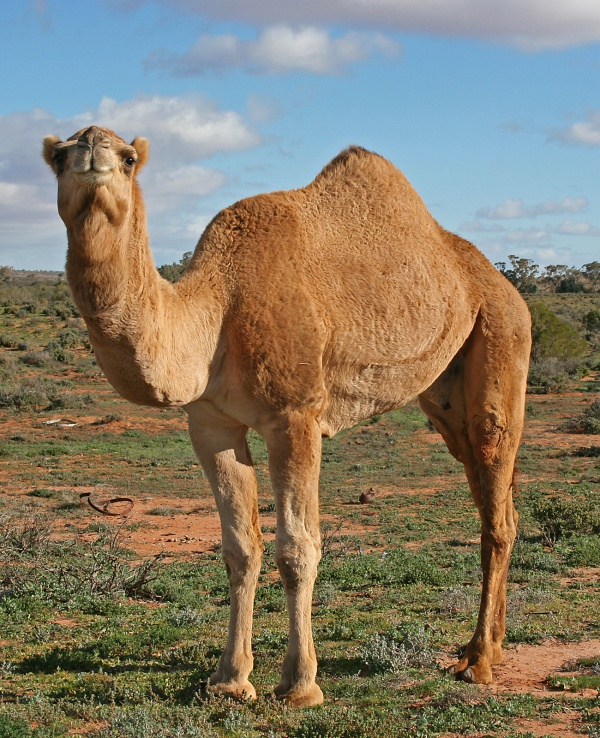
Yemen Animals
| Due to the unstable situation and very high level of general risk, traveling to Yemen may be dangerous. Read more |
Follow the Trail of Wild Nature – Nature Tourism in Yemen
Yemen, a country with a diverse range of ecosystems including deserts, mountains, and coastal areas, is home to a variety of fascinating wildlife. From the elusive Arabian leopard that prowls the rugged mountains to the graceful Arabian gazelle that roams the arid plains, Yemen offers a unique opportunity to encounter some of the most captivating creatures in their natural habitat.
Embark on a journey to discover the incredible biodiversity of Yemen, where you can encounter the Arabian wolf, known for its adaptability to harsh desert conditions, and the Nubian ibex, which navigates the steep cliffs of the country's mountainous regions with remarkable agility. Keep an eye out for the Arabian caracal, a sleek and elusive feline that is a master of stealth in the rocky terrain. Yemen is also a haven for birdwatchers, with species such as the Yemen linnet and the Arabian partridge adding to the country's avian diversity. Join us as we explore the living wonders of Yemen's animal kingdom.
Mammals of Yemen
In the diverse landscapes of Yemen, from arid deserts to lush mountains, one can find an array of fascinating mammals. The Arabian Leopard, a critically endangered species, stealthily roams the rocky hills, though sightings are rare due to its elusive nature. The Arabian Gazelle and the Nubian Ibex, with their graceful forms, are more commonly spotted in the country's rugged terrain. The Hamadryas Baboon, with its distinctive mantle of hair, can be observed in large troops, particularly in the west near the Bab al-Mandab strait. Yemen is also home to the Arabian Wolf, a subspecies adapted to the desert environment, though it is increasingly scarce. These mammals are integral to Yemen's natural heritage, each playing a vital role in the ecosystem.
Birds of Yemen
In the diverse landscapes of Yemen, bird enthusiasts can marvel at a variety of avian species, each adapted to the country's unique environments. The Arabian Partridge, a bird well-suited to the rocky terrain, can be spotted scurrying among the hills. Overhead, the graceful Egyptian Vulture soars, scanning the land for sustenance, while the Yemen Linnet, with its melodious song, adds a musical backdrop to the Yemeni highlands. Coastal regions provide a haven for the Osprey, a fish-eating raptor with impressive diving skills. In the Socotra archipelago, the endemic Socotra Sunbird and Socotra Starling display their island-specific adaptations, enchanting birdwatchers with their distinctive appearances and behaviors.
Top Spots for Wildlife Observation in Yemen
- Hawf Protected Area, located in the eastern part of Yemen near the border with Oman, is a mountainous region that hosts a variety of wildlife. The area is particularly known for its Arabian leopard population, although these elusive big cats are rarely seen. Visitors may also spot Arabian wolves, Nubian ibex, and several species of birds, including the Arabian partridge and the Yemen linnet.
- Socotra Archipelago, a UNESCO World Heritage Site, is a group of four islands in the Arabian Sea. The main island, Socotra, is renowned for its unique biodiversity, with a high number of endemic species. The Socotra warbler, Socotra sunbird, and the Socotra starling are some of the bird species that can be observed here. The islands are also home to the Socotra chameleon, Socotra cormorant, and various endemic reptiles.
- Bura Protected Area in the western highlands of Yemen is a forested region that provides habitat for the Hamadryas baboon and a variety of bird species, including the Arabian woodpecker and the Yemen thrush. The area's dense woodlands and rugged terrain offer a haven for these species amidst the arid landscapes of Yemen.
- Al Wadi al Jadid Protected Area, situated in the central part of the country, is a sanctuary for the Arabian gazelle and the striped hyena. The reserve's mix of desert and wadi (valley) environments supports a range of desert-adapted flora and fauna, and birdwatchers might catch a glimpse of the lappet-faced vulture or the Egyptian vulture soaring above.

 Oman
Oman